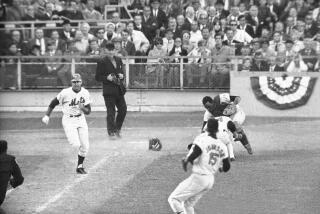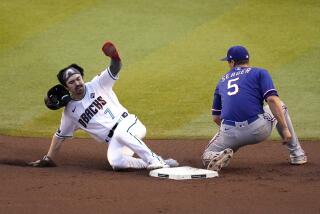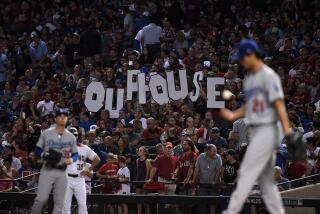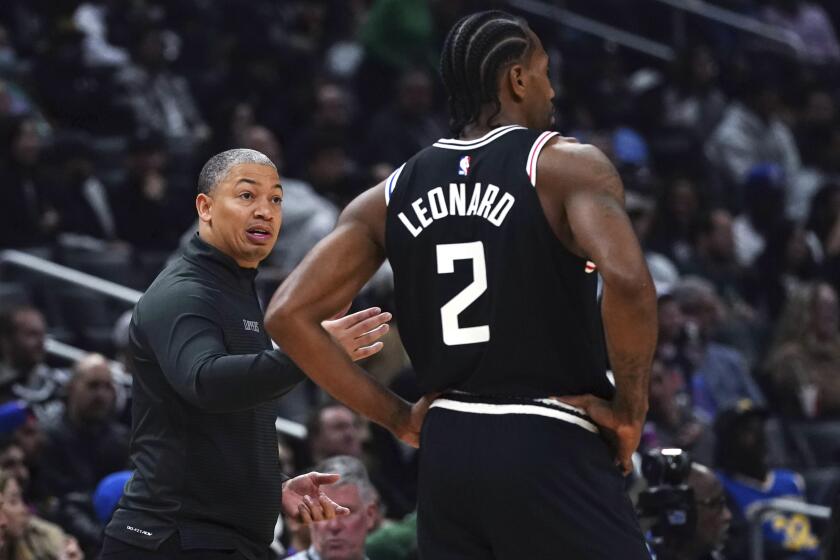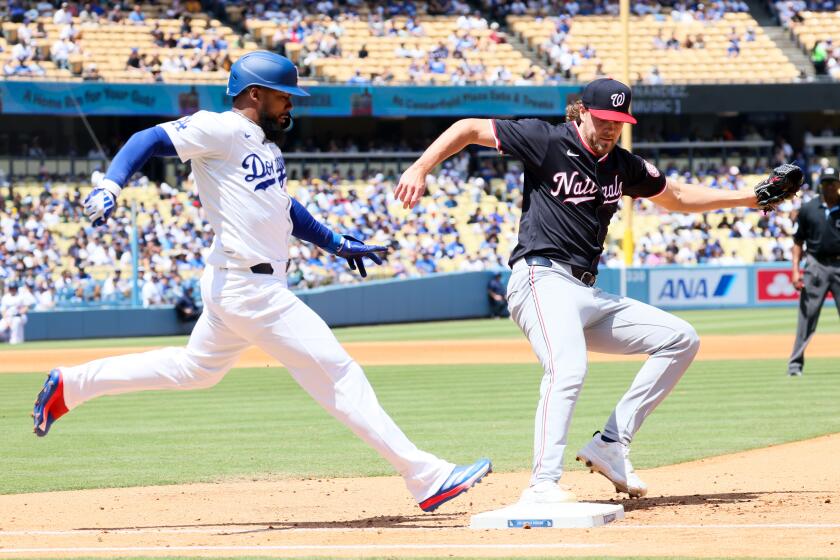MLB slightly adjusts home plate collision rule

White Sox manager Robin Ventura on the home-plate collision rule.
After all the angst, all the confusion, all the outrage over the new rule designed to make collisions at home plate extinct, baseball officials responded Tuesday with one little change.
“If a runner is out by 30 feet,” Angels General Manager Jerry Dipoto said, “then they’ll exercise common sense.”
That should take care of the outrage, anyway.
The last thing baseball needed is an October spotlight on a play that has happened a few times lately — throw beats the runner by plenty, but replay shows the catcher blocking the plate before the ball gets there. The runner gets there even later, but never mind, the runner is safe.
“When a ball beats a runner by that much he should be out, no matter what a catcher does,” Angels Manager Mike Scioscia said. “And if a runner has a play beat, he should be safe no matter what a catcher does.”
Done, and done, according to a memo sent to clubs Tuesday. As for the angst and the confusion about what baseball calls Rule 7.13, that can wait.
“It needs work in the off-season,” Commissioner Bud Selig said at Dodger Stadium on Friday.
The rule has succeeded in its primary objective — to protect catchers from injuries in collisions at home plate. In general, the rule urges runners to slide into home plate and catchers to provide runners with a lane to get there.
Yet, players and managers say they remain baffled by what they say are inconsistencies in applying the rule, both from the umpires on the field and at replay headquarters in New York.
“There’s still an aura of uncertainty about what exactly is going to be called at home plate,” Scioscia said.
“What I get from the umpires is that they’re not comfortable with the rule,” Dodgers Manager Don Mattingly said. “I think they understand what the rule is saying. They’re just not comfortable with it.
“We see one play look exactly like another, and one is safe and the other is out. And you’re going, ‘Why?’ ”
The primary source of confusion appears to be the directive that the catcher cannot block the plate unless he has the ball. That puts the burden on catchers to watch a runner coming at him from one direction and a throw that might be coming at him from another direction, all the while worrying about whether one of his feet is blocking the plate.
That also compels umpires to make a judgment call about whether a wide throw inadvertently forces a catcher to block the plate, or whether the catcher already was blocking the plate, all in a split second, and with managers and catchers claiming those calls are inconsistent.
“Those three minutes when I’m waiting for New York to call back and say if he’s safe or out are the most terrifying minutes,” Dodgers catcher A.J. Ellis said.
“They need to do a lot of things with that rule,” Arizona Diamondbacks catcher Miguel Montero said. “I don’t know if anybody knows what’s going on, to be honest with you.”
Any such play almost certainly will be reviewed, because replays related to the new rule are not counted as a manager’s challenge. As some teams have learned the hard way, that kind of replay could reveal the rule was followed but the catcher dropped the ball, and a runner called out would then be safe.
Ellis said he is part of an email chain with the players’ union, designed for catchers to ask questions about the new rule and offer suggestions on how to improve it.
With the catchers protected, union chief Tony Clark said, the focus needs to shift to explaining how the rule might be uniformly interpreted, including a determination of when and where a catcher can be positioned, based on where the ball might be.
“The gray area is still there,” Clark said. “We’re trying to find the common ground sooner rather than later.”
Joe Torre, baseball’s point man in on-field matters, said the discussions with the union that led to Tuesday’s rule clarification involved “looking at a lot of videos of baserunners,” with the thought that determining when most runners slide might help clarify when a catcher should not be permitted to block the plate.
“At what point, [with a runner going] from third to home, if the catcher is there without the ball, is it a violation?” Torre said. “Obviously, we can’t have a guy rounding third and say, ‘That’s it, the guy is standing in front of home plate. The runner should score.’ ”
Curiously, Torre’s video review of runners trying to score uncovered an emerging trend better suited for the NBA Finals or the World Cup.
“We’ve seen a couple instances where we’ve had some flopping,” Torre said. “If the guy is out, he flops and says, ‘Well, I’m blocked.’
“I don’t want that. I don’t like it in the other sports. I certainly don’t like it in this sport.”
Nothing in Tuesday’s rule clarification addresses that. So imagine that, a World Series decided by a flop worthy of the World Cup.
Times staff writer Mike DiGiovanna contributed to this report from Arlington, Texas.
More to Read
Get our high school sports newsletter
Prep Rally is devoted to the SoCal high school sports experience, bringing you scores, stories and a behind-the-scenes look at what makes prep sports so popular.
You may occasionally receive promotional content from the Los Angeles Times.

